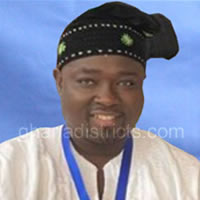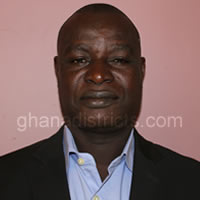Introduction
The concept of household is widely used in census and surveys to identify and group persons into basic units of enumeration. The household concept plays a vital role as a minimum unit of living arrangements of the population. Household for the nation is also influenced by socio-cultural practices such as marriage, kinship type and inheritance. This chapter presents information on the social characteristics of the District. These include Household Size, Composition and Headship, Marital Status, Nationality and Religious Affiliation and Literacy and Education.
Household Size, Composition, and Structure
The 2010 PHC defines a household as a person or a group of persons, who live together in the same house or compound and share the same house-keeping arrangements and constitute a single consumption unit. Household members are not necessarily related by blood or marriage because friends and hired domestic workers may also be part of households. The information on households basically includes household structure, composition, and relationship to head of household. Household heads are, therefore, important when considering social and demographic issues. Thus household dynamics and standard of living are better understood within a context of age, sex and socio-economic characteristics of household heads (GSS, 2013).
Household Size
The 2010 PHC defines a household as a person or a group of persons, who lived together in the same house or compound and shared the same house-keeping arrangements. Table 3.1 gives information on household size by locality of residence in Karaga District. The total household population in the district is 76,927 with 7,664 households, giving an average household size of 10. This average household size is higher than the regional average (7.7). The table further shows that average household size for the rural areas (10.1) is higher than the urban areas (9.7).
Household Composition
Table 3.2 presents household composition and sex. The highest proportion of the household population is made up of children (47.9%). The total number of persons who are household heads is 7664 constituting 10 percent of the household population in the District. Of this number the male headed households constitute 19.2 percent and female heads 1.5 percent of the household population. Other relatives (14.4%) also form a substantial part of the household population. There are also more grandchildren in male headed households (8.3%) than female headed households (7.2%).
Household Structure
Table 3.3 shows the household population by structure and sex Table 3.3 shows that 71 percent of the household population is made up of the extended family system comprising of the head, spouse(s), children and heads relatives, 12 percent are the nuclear system, and about seven percent are single-parent extended. The proportion of household population who are heads in male headed households (0.3%) is higher than heads in female headed households. The reverse is true for households which are made up of extended (Head, spouse(s), children and Head’s relatives)
Marital Status
Marriage is socially defined to include formal unions that are legally, traditionally or religiously sanctioned as well as cohabiting unions. Marriage is associated with population dynamics as it affects the processes and levels of fertility and, to a lesser extent, mortality and migration. Marriages are recognized by society as a union between a man and a woman for the purpose of procreation, mutual support and companionship.
T Figure 3.1 illustrates the distribution of marital characteristics of the population 12 years and older in the Karaga district. In 2010, the population 12 years and older who The Figure shows that 30.9 percent of persons who are 12 years and older had never married. About 64 percent are married, and 3.1 percent were widowed. The proportion of the population aged 12 years and older who in formal/consensual union/living together is 0.4 percent. A small proportion (0.9%) of the population 12 years and older are either divorced or widowed.
Marital status, age and sex
Table 3.4 shows that there are notable variations in the marital status of the population in the district. Age group 12-14 has the highest proportions of never married (89.1%), and the lowest proportion of separated, divorced or widowed (0.0%) persons. On the other hand, age group 35-39 recorded the highest proportion (91.6%) of the married population. A higher proportion of males (39.5%) than females (23.4%) had never been married. On the other hand, females were more likely to be married (69.0%) than males (58.0%). Again, the proportion of females separated, divorced or widowed is higher than that of males. The proportion of males who have never been married (90.1%) is higher than females (87.9%).
Marital status and level of education
Table 3.5 shows that a large proportion of the married in the population 12 years and older have no education (88.4 %) while about nine percent have basic education. About 57 percent of the never married population of both sexes has no education with about 35 percent having basic education. The proportion of never-married females with no education (61.5%) is less than the same proportion for males with no education (54.6%).
Marital status and economic activity
Table 3.6 provides information on the economic activity status of the various marital status categories in the District. Table 3.6 indicates the population 12 years and older by sex, marital and economic activity status in the district. The proportion of the widowed persons who are employed (42.4%) is the least among the same proportion for all the marital status categories in the District. The Table also shows a higher proportion of unemployed and economically not active for population 12 years and older who are never married than any of the marital statuses.
Nationality
Table 3.7 shows that about 98 percent of the population of the district are Ghanaians while three percent are Non-Ghanaians. This is slightly above the regional values of 97 percent and about three percent for Ghanaians and non-Ghanaians respectively. Majority of the district population is Ghanaian by birth (93.5%). Persons with dual nationality constitute two percent while Ghanaians by naturalisation make up one percent. The proportion of male non-Ghanaians (3.5%) is marginally higher than the proportion of female non-Ghanaians (3.1%). ECOWAS nationals constitute the highest proportion of the non-Ghanaian population (2.4%) while other nationals constitute almost one percent.
Religious Affiliation
Table 3.8 shows that about 83 percent of the population professes the Islamic faith, followed by Traditional religion at 12.8%, with Christianity constituting about four percent of the population of the district. Regionally, 60 percent of the population professes Islam, 21 percent Christianity and 16 percent Traditional religion with 71 percent, about 18 percent and five percent of the population nationally professing Christianity, Islam and Traditional religions respectively. Only a small proportion of the population in the district either adhere to other religions (0.1%) or are not affiliated to any religion (0.5%). Generally, more females (83.4%) than males (82.4%) are reported as Muslims in the district. On the other hand, slightly more males (13.3%) than females (12.3%) belong to the Traditional religion. Again, more females (3.8%) than males (3.7%) in district professed to Christianity.
Date Created : 12/20/2017 5:39:12 AM





 facebook
facebook twitter
twitter Youtube
Youtube TOLL FREE 0800 430 430
TOLL FREE 0800 430 430 +233 593 831 280
+233 593 831 280 GPS: GE-231-4383
GPS: GE-231-4383 info@ghanadistricts.com
info@ghanadistricts.com Box GP1044, Accra, Ghana
Box GP1044, Accra, Ghana